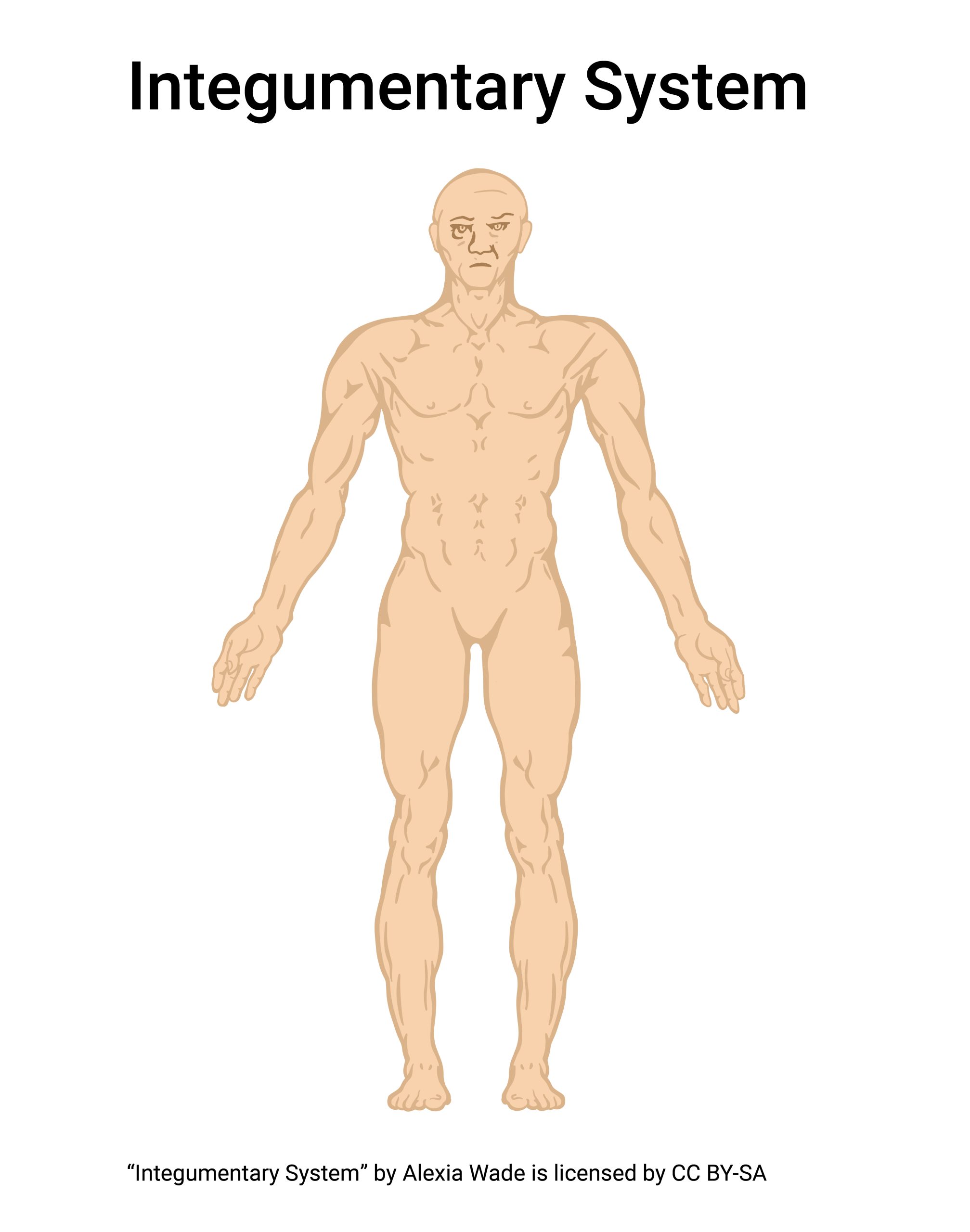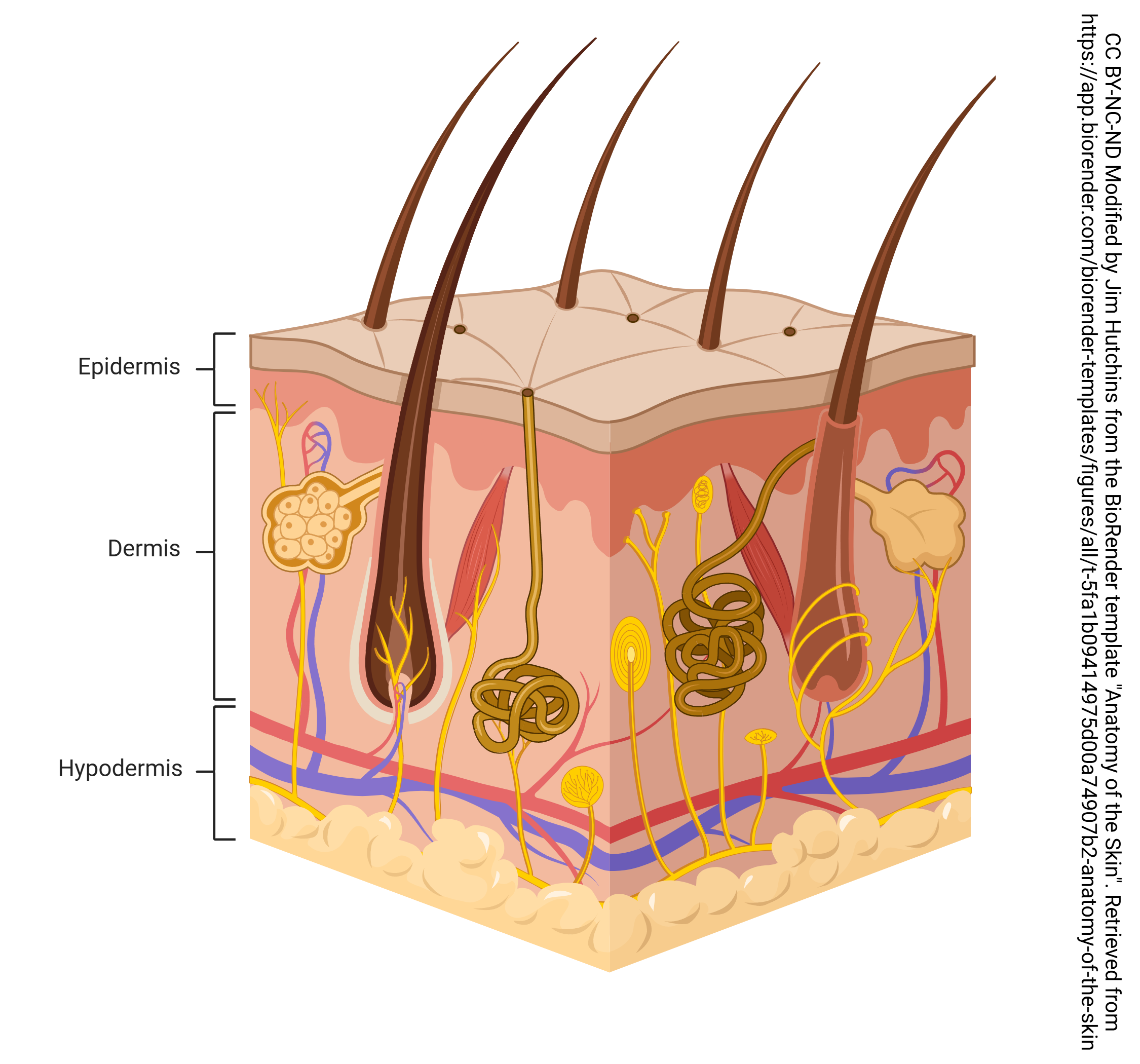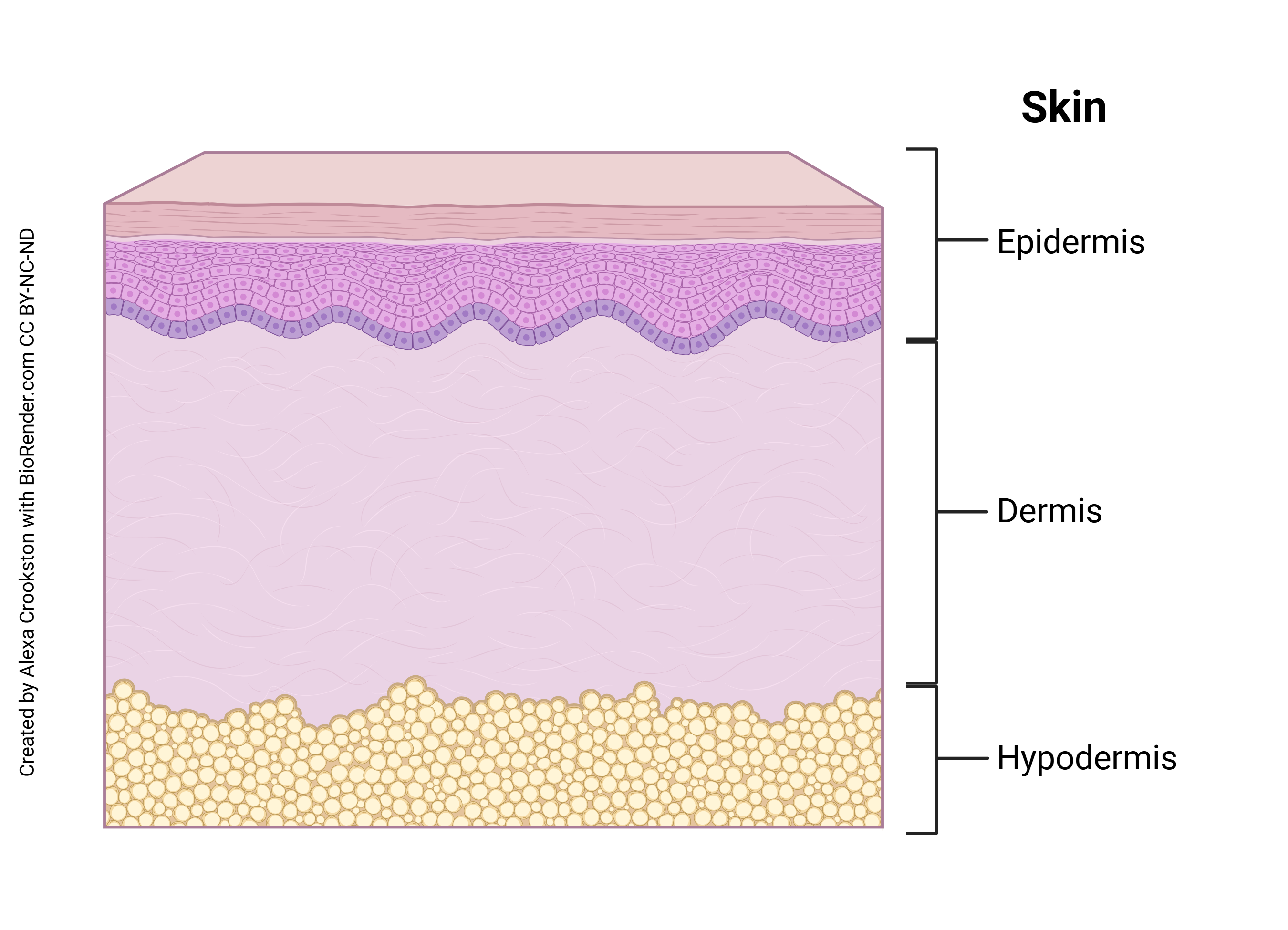Functions of the Integumentary System
Objective 8.1
8.1.1 Describe the integumentary system and its role in homeostasis.
8.1.2 Identify the structure and general functions of the layers of skin.
This unit represents a turning point in the course. Up to this point, we have studied the foundational knowledge that allows you to better understand the workings of the human body. From this point forward, we will focus on organ systems, one by one. The first organ we will study is the skin (also called integument or cutaneous membrane).

What do you think when you look at your skin in the mirror? Chances are that you don’t think much of it very often unless something is wrong with it. Maybe a blemish needs to be covered up with makeup. Maybe you are thinking about adding a tattoo or body piercing. How about a “makeover” to change the appearance of your most outward and visible organ? The accessory structures, hair and nails, can greatly change your appearance also. That is usually the context that we think about the integumentary system. You may not have thought about the fact that the skin belongs to one of the body’s most essential and dynamic systems: the integumentary system. The integumentary system refers to the skin and its accessory structures, and it is responsible for much more than simply lending to your outward appearance.
In the adult human body, the skin makes up about 16 percent of body weight and weighs about 5 kg and covers an area of 2 m2. In fact, the skin and accessory structures are the largest organ system in the human body. As such, the skin protects your inner organs and is in need of daily care and protection to maintain its health. This unit will introduce the structure and functions of the integumentary system, as well as some of the diseases, disorders, and injuries that can affect this system. The branch of medicine that treats diseases of the skin is dermatology.
The functions of the skin, and the molecules and cells that carry out each function include:
- Protection (from abrasion, friction, infection, UV rays)
- Keratin, melanin
- Permeability Barrier (prevention of extreme water loss)
- Keratin, lipid, sebum
- Immunologic Defense
- Keratinocytes, Langerhans cells
- Sensory Perception
- Free and encapsulated nerve endings
- Thermoregulation (regulating body temperature)
- Sweat glands, blood vessels, fat
Although you may not typically think of the skin as an organ, it is in fact made of tissues that work together as a single structure to perform unique and critical functions. The skin and its accessory structures make up the integumentary system, which provides the body with overall protection. The skin is made of multiple layers of cells and tissues, which are held to underlying structures by connective tissue. The deeper layer of skin is well-vascularized (has numerous blood vessels). It also has numerous sensory, and autonomic and sympathetic nerve fibers ensuring communication to and from the brain.
Layers of the Skin

The layers of the skin include the superficial epidermis on the outside and the deeper dermis on the inside. Each of these two layers is subdivided further.
The epidermis is mostly comprised of dead cells, which have expelled their nucleus and all organelles and become simply bags of a protein called keratin (keratinized, stratified squamous epithelium). Keratin is an intracellular fibrous protein that gives hair, nails, and skin their hardness and water-resistant properties. The epidermis is avascular: it does not have any blood vessels.
The dermis is a living layer of tissue underneath the epidermis. The dermis contains blood vessels, nerves, glands, and living skin cells. Hair roots are found in the dermis, and there is a small bit of muscle (the arrector pili) that controls the angle of each hair.
Beneath the dermis is the hypodermis or subcutaneous layer. This is where a hypodermic needle penetrates the epidermis and dermis and delivers its contents to the subcutaneous layer, a so-called “subQ” injection.

Media Attributions
- U01-027 integumentary system © Wade, Alexia is licensed under a CC BY-SA (Attribution ShareAlike) license
- U08-001 Anatomy of the Skin (1) © Hutchins, Jim is licensed under a CC BY-NC-ND (Attribution NonCommercial NoDerivatives) license
- U08-002 Skin Layers © Crookston, Alexa is licensed under a CC BY-NC-ND (Attribution NonCommercial NoDerivatives) license

